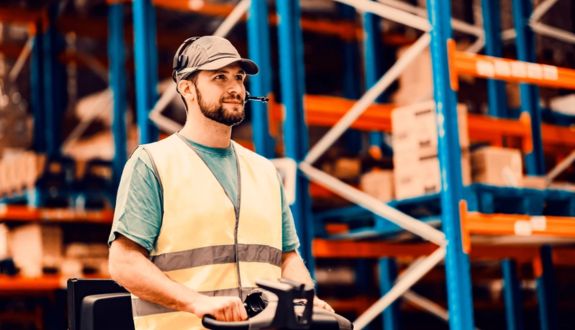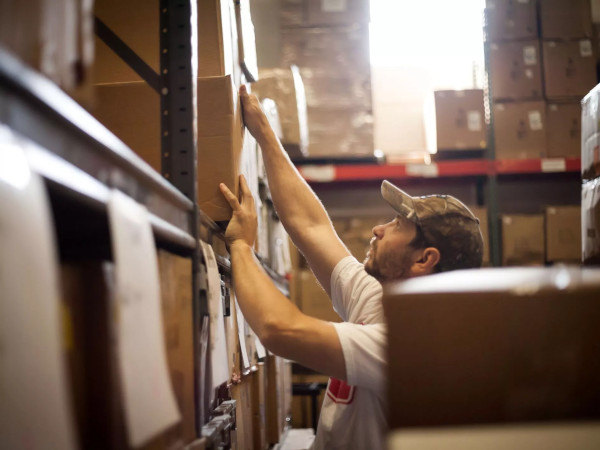Hands-free picking is a type of picking that involves some form of automation so that the operator doesn’t have to carry a piece of paper or a mobile device in their hand to guide them through the picking process. As a result, the operator is able to pick with both hands. The most common methods for hands-free picking are voice-directed picking and pick by light.
Automated goods to person (G2P) systems such as vertical carousels, vertical lift modules (VLMs), and horizontal carousels enable hands-free picking because they deliver products directly to operators. In some cases, operators use methods like pick by light in conjunction with these automated systems. Hands-free picking is important because it improves business performance. Combining the right technology for the product mix helps increase operational accuracy and optimize productivity while at the same time driving down labor costs.
Voice Picking
Voice-directed picking enables an operator to work while simultaneously confirming their actions via voice recognition. First, the operator can acknowledge to the warehouse management system (WMS), warehouse execution system (WES), and/or warehouse control system (WCS) that they are at the right location. To do this, they may have to verbalize a location code or identifier to determine that location is correct. Then, the voice picking system tells them how many to pick of a certain item. Finally, the operator speaks back to the voice device to confirm what they’ve picked.
All of this dialogue occurs while the operator is picking, so that as soon as they’re done, the voice system can tell them where to go next. When the picker is in dialogue with the system and their operations are guided, accuracy improves. In addition, there is a significant productivity boost associated with being hands free, particularly in certain situations, such as full-case picking, full-bag picking, pick to pallet or skid, or man-up picking from a fork truck. Without voice picking, the operators in these situations would have to carry a piece of paper or a mobile device, set it down to retrieve the goods from the location, pick the goods, and then manually verify the pick on the piece of paper or with the mobile device.
Other types
There are other forms of hands-free picking, not usually case or bag, which is picked by light, vertical carousels, vertical lift modules, horizontal carousels. These are somewhat different as the product is delivered to the operator, which is an automated goods to person (G2P) application. Operators can pick using a light directed operation.
Classic pick by light
Classic pick by light is a hands-free picking method typically used on pallet flow or carton flow racking, i.e., in environments where the goods to be picked are moving fast. Lights guide the operator through the steps needed for picking, and their hands are free to pick while they work. Confirmation occurs when the operator reaches into or out of a location, presses a button, or completes some additional step to adjust the picked quantity before pressing a button.

There are a number of different ways to integrate hands-free picking with a warehouse management (WMS) or enterprise resource planning (ERP) system. Usually, voice-picking technology is integrated with a WMS or with a warehouse control system (WCS)/warehouse execution system (WES) in place to manage the automation. Voice-picking technology is rarely directly controlled by a tier one WMS or ERP unless there is an intermediary WES or WCS. Ascent Warehouse Logistics have built the capabilities for all forms of hands-free picking directly into our WMS/WES/WCS software, so another layer of software is not required to support hands-free picking.
If a WMS does not have the capability to integrate with hands-free picking or a WES/WCS lacks the capabilities to manage and control an interface to automation equipment, then a standalone software package is required to control automation equipment supporting hands free operations (i.e. voice picking headsets, carousels, pick by light hardware, etc.). This often results in an isolated island of automation and another integration point, which inherently is less efficient and imposes a higher up-front and long-term cost of ownership.
